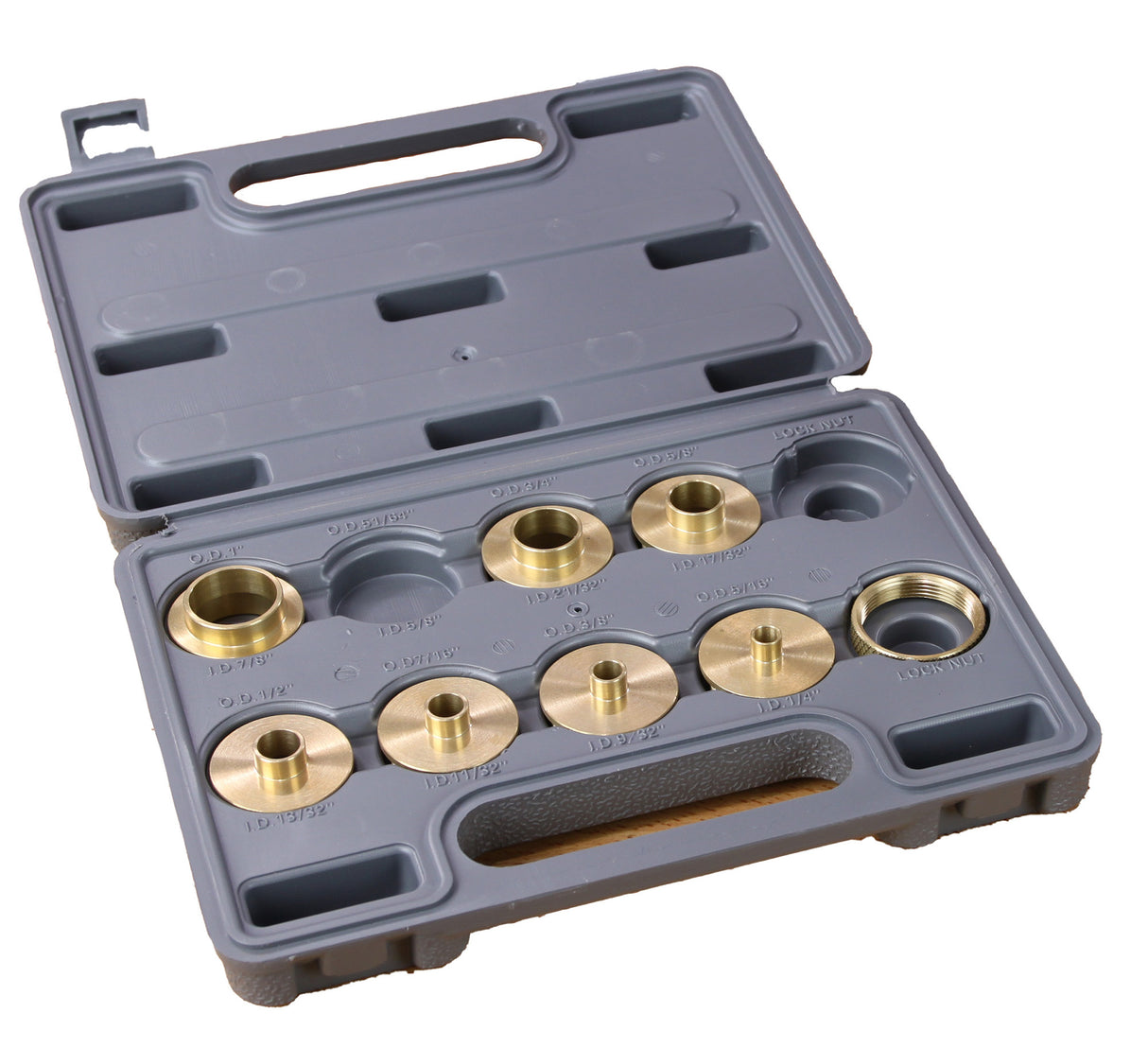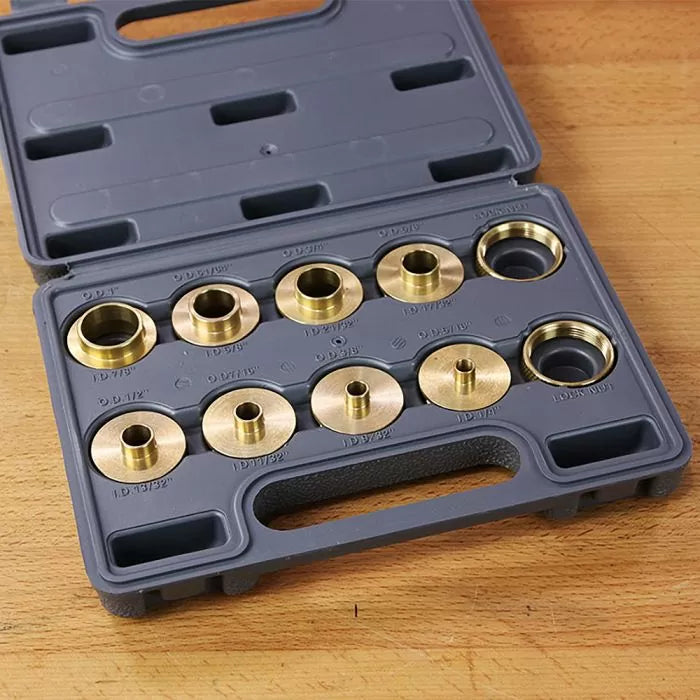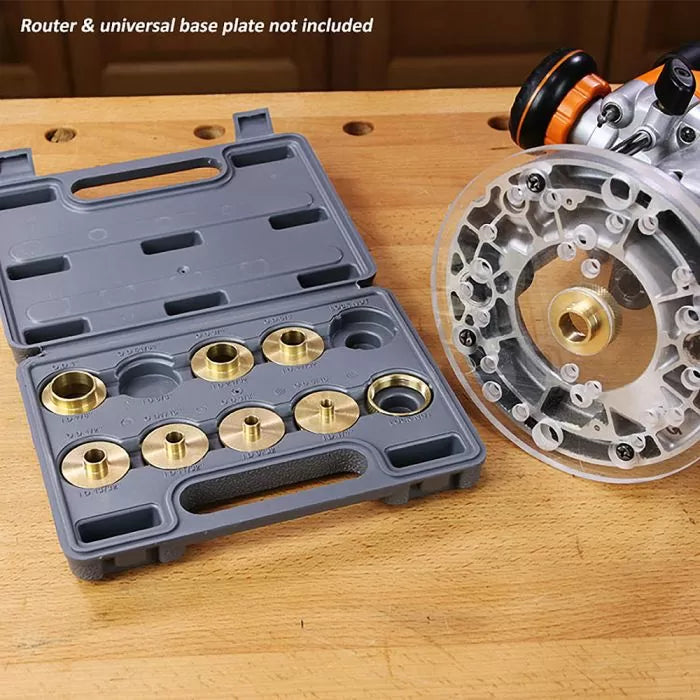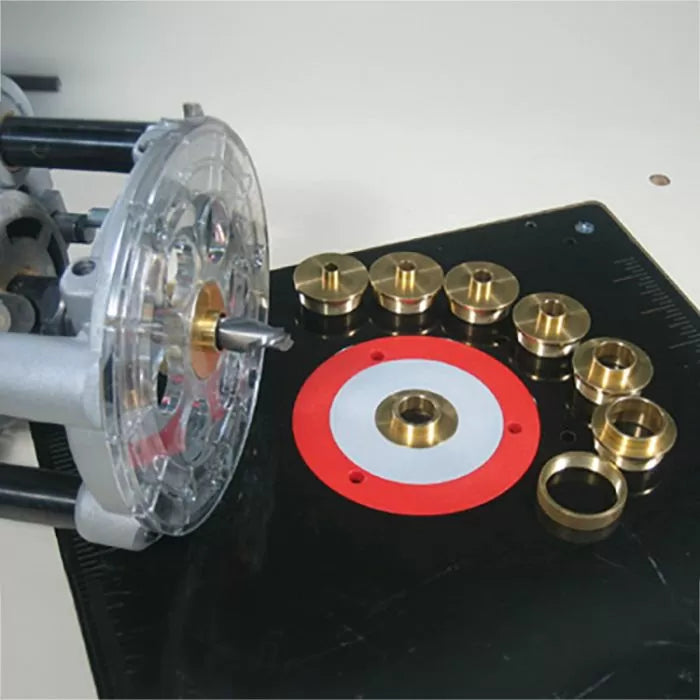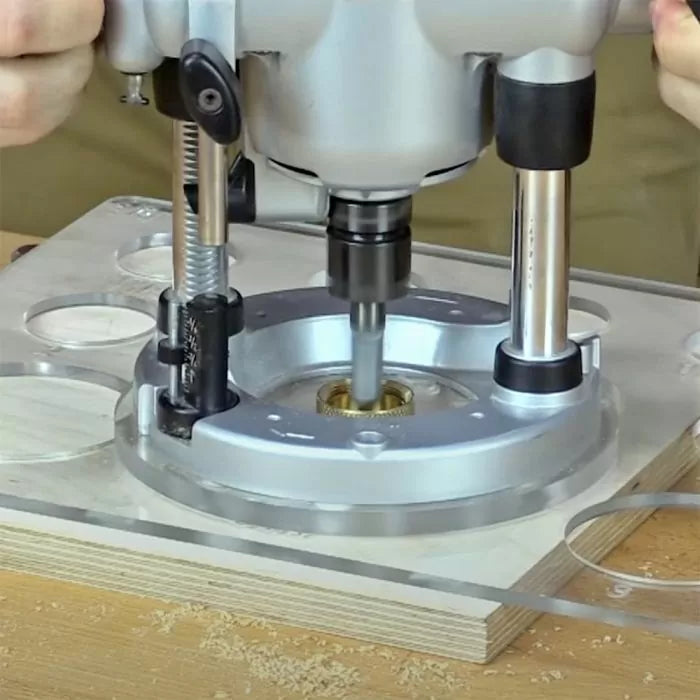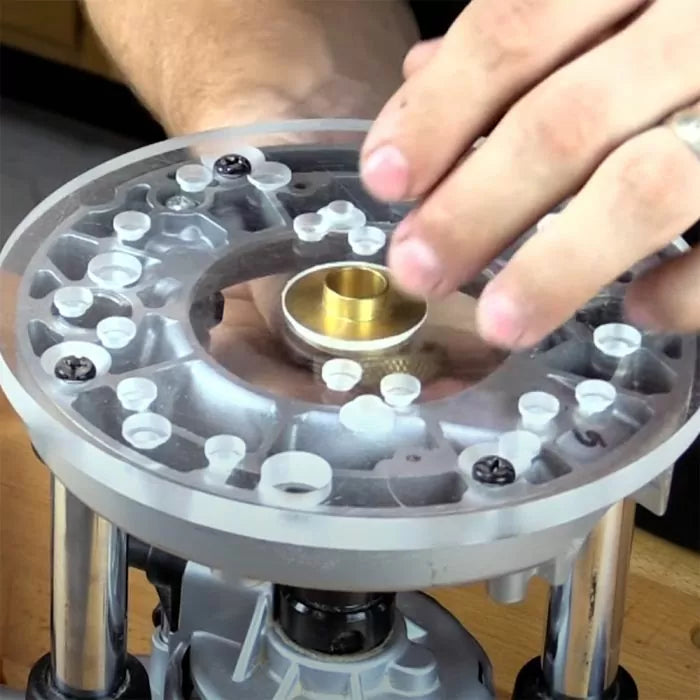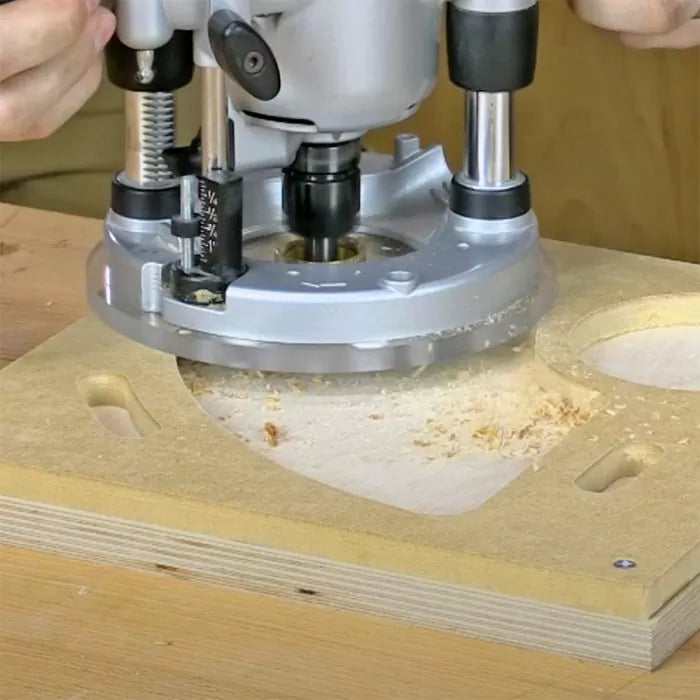10-Pc. Brass Template Guide Set
Increase the versatility of your router with our 10-Pc. Brass Template Guide Kit. Perfect for template work on either your router table or hand held router.

If you have been woodworking for any length of time you have probably heard the term; "Porter-Cable style guide bushing." You may also be asking yourself what are these guide bushings and why do I need them? The answer is versatility. These little bushings come in a variety of different sizes for use with different diameter router bits and allow you to follow templates, straight edge guides, and use countless jigs. Not to mention they are often used in both handheld routers and router tables.

Let's start with the basics; at Infinity Tools we carry a 10 piece set of guide bushings that includes 8 different sizes and a pair of lock rings to secure them into your router's base plate or router table. All of the bushings are made of brass. Brass has a natural lubricity that makes the guides slide more easily against templates compared to common steel bushings. It also is soft enough that it typically won't damage your router bit should the two accidentally touch for any reason. The entire kit comes packed in a handy storage case marked with both the ID and OD of each bushing keeping them safe and organized.
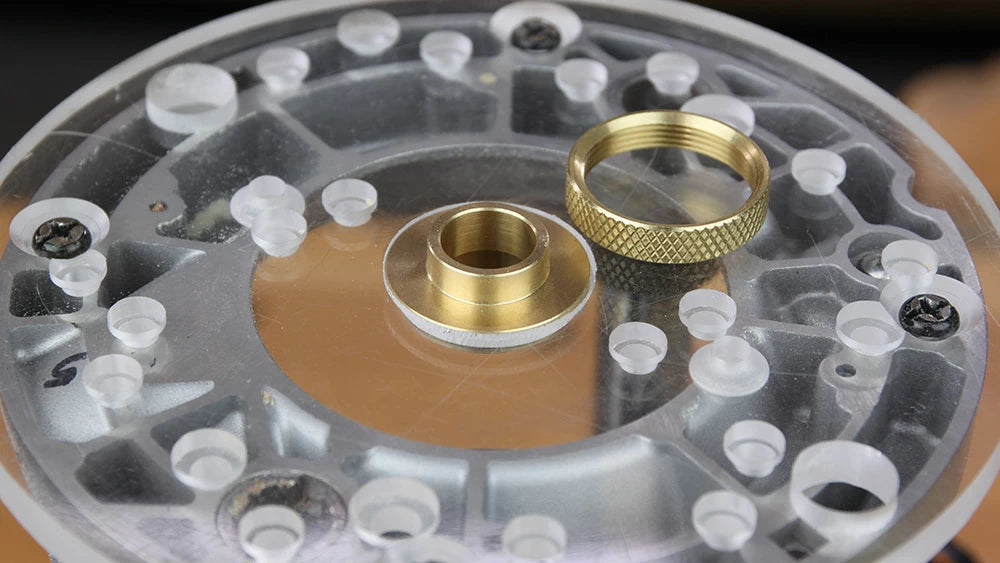
When you hear the term; "Porter-Cable Style Bushing", it is referring to the size and shape of the bushing and not necessarily the brand. This is important because you will need to make sure that your router's base plate or router table reducing ring has an appropriately sized and shaped opening for the bushing to fit into. The good news is that this opening has become fairly standard. If you flip your router over and the opening is stepped chances are you are good-to-go.
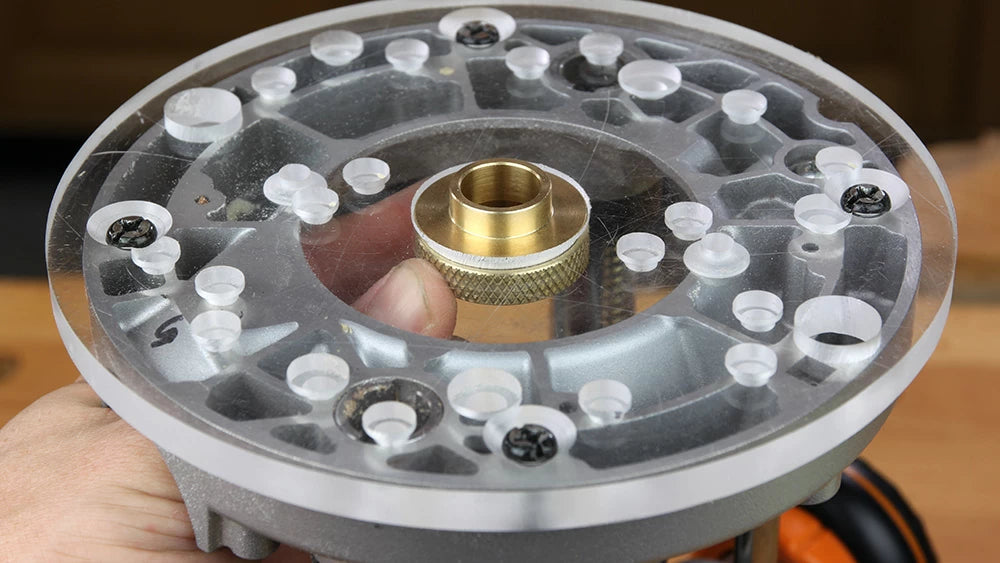
It's always a good idea to measure the opening in your base plate just to make sure. The large step should measure 1-3/8" in diameter and the small step should measure 1-3/16", this allows the threaded portion of the bushing to pass through the base plate to be locked in place by the retaining ring. The larger shoulder of the bushing sitting flush or slightly below the surface of your router's base plate.
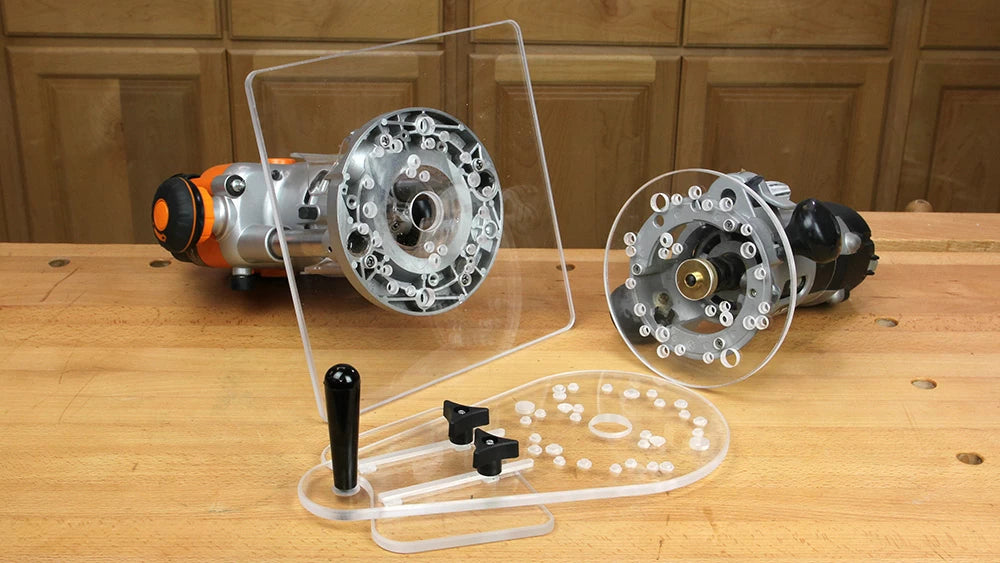
If your router's base plate does not accept the P.C. style bushing we offer several different universal router base plates that solve your problem. Our universal router plates will bolt-up to the vast majority of routers and will allow you to use our 10-pc. brass guide bushing set.

We also have base plates to fit compact or trim routers so you can use these guide bushings. For those of you that have one of these little routers, you know how handy and convenient they are to use.
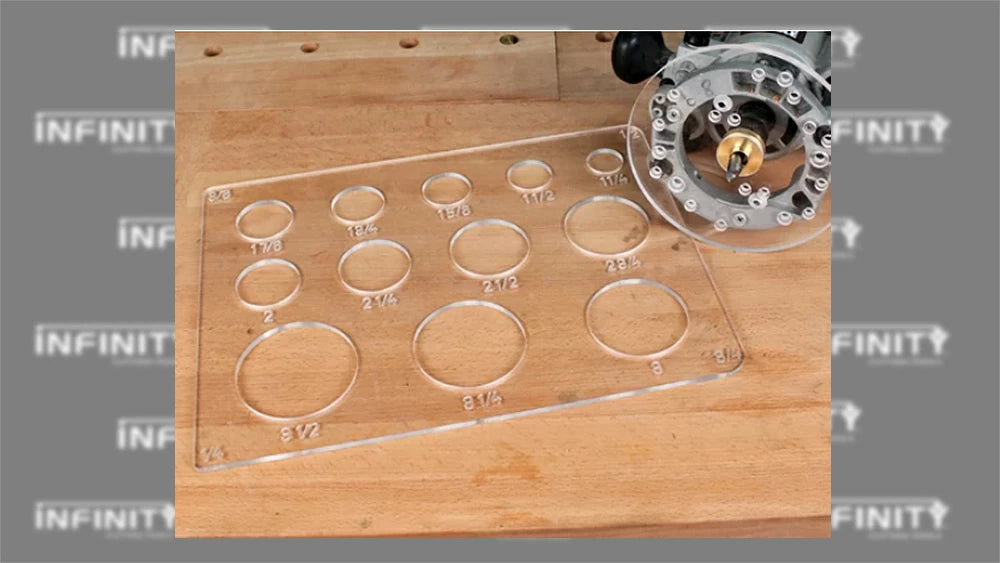
The part of the guide bushing that does the work is the "collar". This is the part that follows your jig or template. The collar has three important dimensions; the inside diameter for the router bit to pass through, the outside diameter to follow the template and the collar height. The collar height is important because it dictates how thick your template needs to be in order for the collar itself not to drag on the workpiece. Our guide bushings have a collar that is a low profile 7/32" tall and allows you to use templates as thin as 1/4" material like our Circle & Radius Cutting Template, CIR-001. Most other brands have a collar as tall as 1/2" forcing you to use much thicker templates and reduces how deep your router bit can reach.

Guide bushings have a big advantage over bearing guided router bits. On the former, the bearing is fixed on the bit itself so you don't have much flexibility when it comes to adjusting the depth of cut because the bearing needs to ride on your template. With a bushing, the router bit is adjusted independently so the router bit can be set to any depth and allows you to make multiple passes to reach your desired depth.

One thing you need to keep in mind when using a guide bushing is that the bushing creates an offset that you need to account for when making templates or locating guides. To accomplish this you'll want to use a Base Plate Alignment Kit, 115-040 when setting up your router to ensure that the router bit passes perfectly through the center of the bushing.
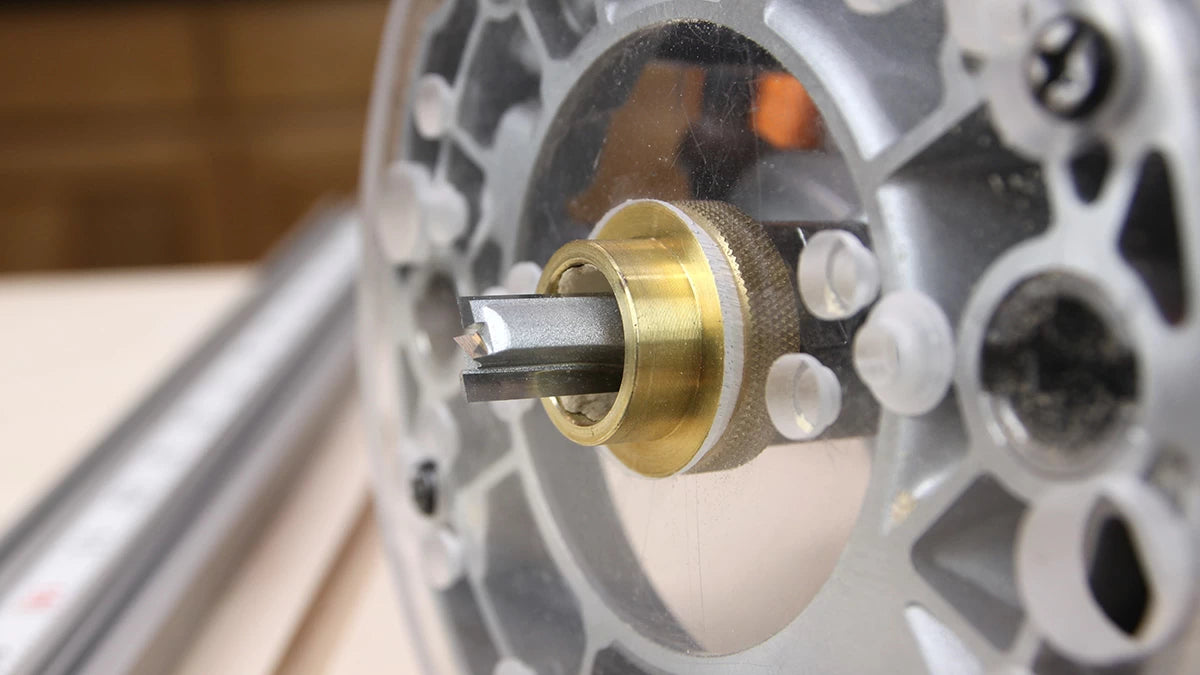
In order to figure out how much of an offset the bushing and router bit combo will create let's look at a common combination. If you are using a 1/2" diameter straight router bit with a 5/8" OD bushing you will need to allow for a 1/16" offset between the edge of your template and the edge of the cut. You can use this offset to your advantage because as long as the router bit you are using fits through the hole in the bushing you are good to go. For instance, you can use a 1/4" diameter router bit with a 1" OD bushing to create a 3/8" offset. While this does require a little simple math during setup, it can be a very handy feature especially on complex projects that require multiple cuts.
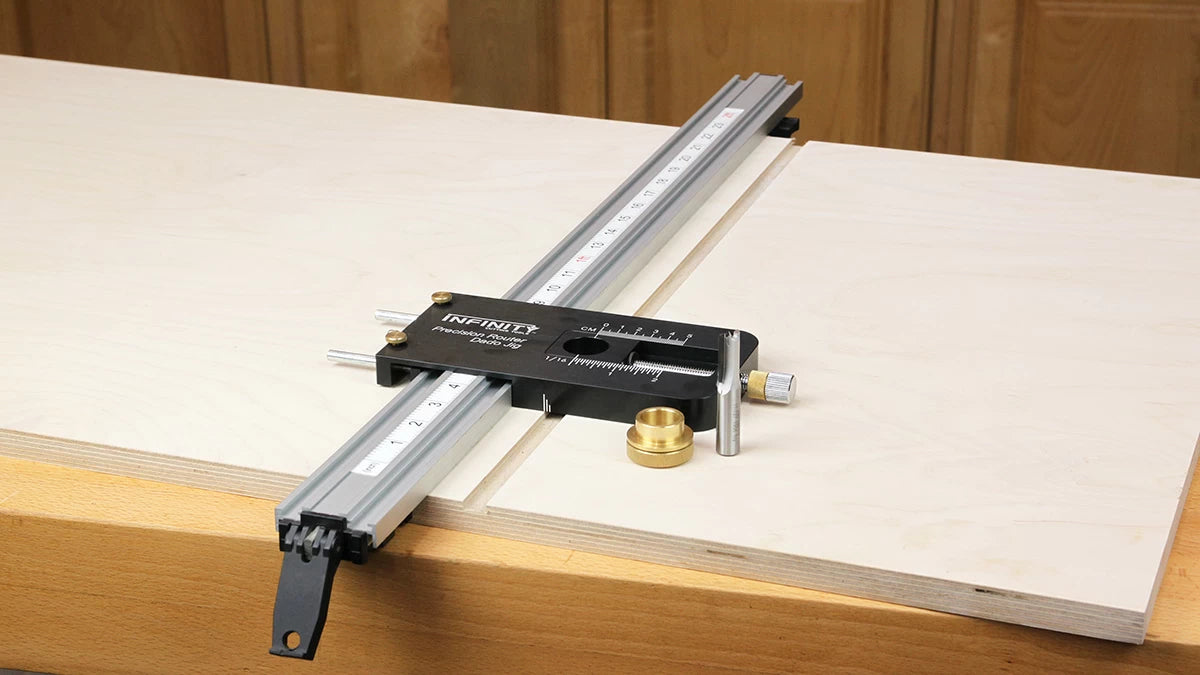
If you have been looking for a great way to make dadoes and grooves, say, for that next bookshelf project, have a look at the Infinity exclusive Precision Router Dado Jig, 100-503. This jig uses the included guide bushing to locate the router accurately and a straight edge clamp to guide the cut. What is so handy about this jig is you can make dadoes and grooves of almost any width as long as you have a router bit that is the same size or smaller than the grove you need to make. This is really handy when working with plywood that is never really as thick as you need it to be to match a standard-sized router bit.

